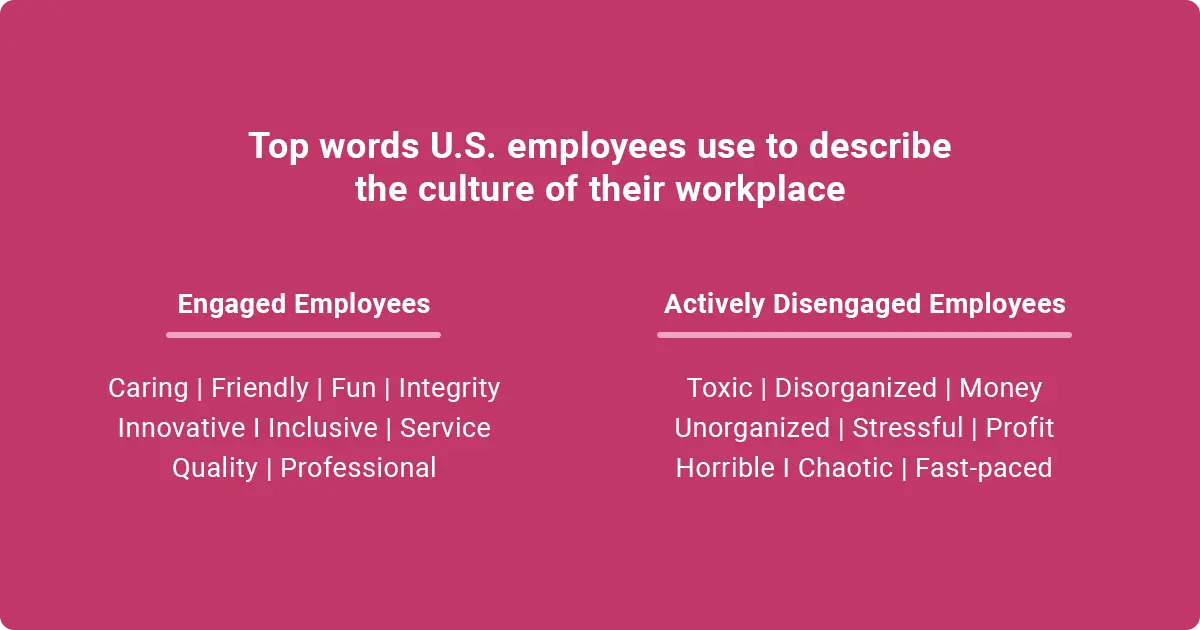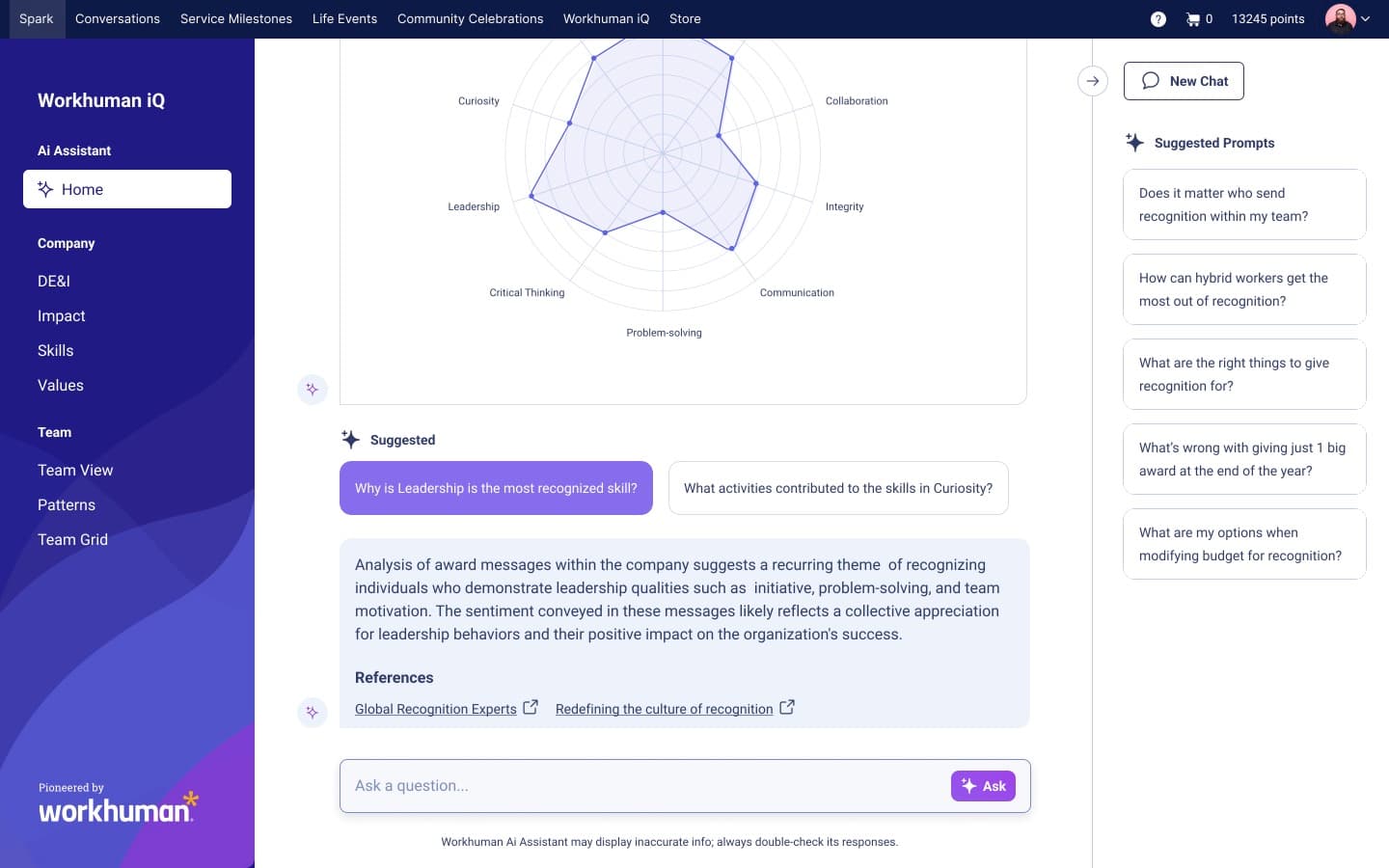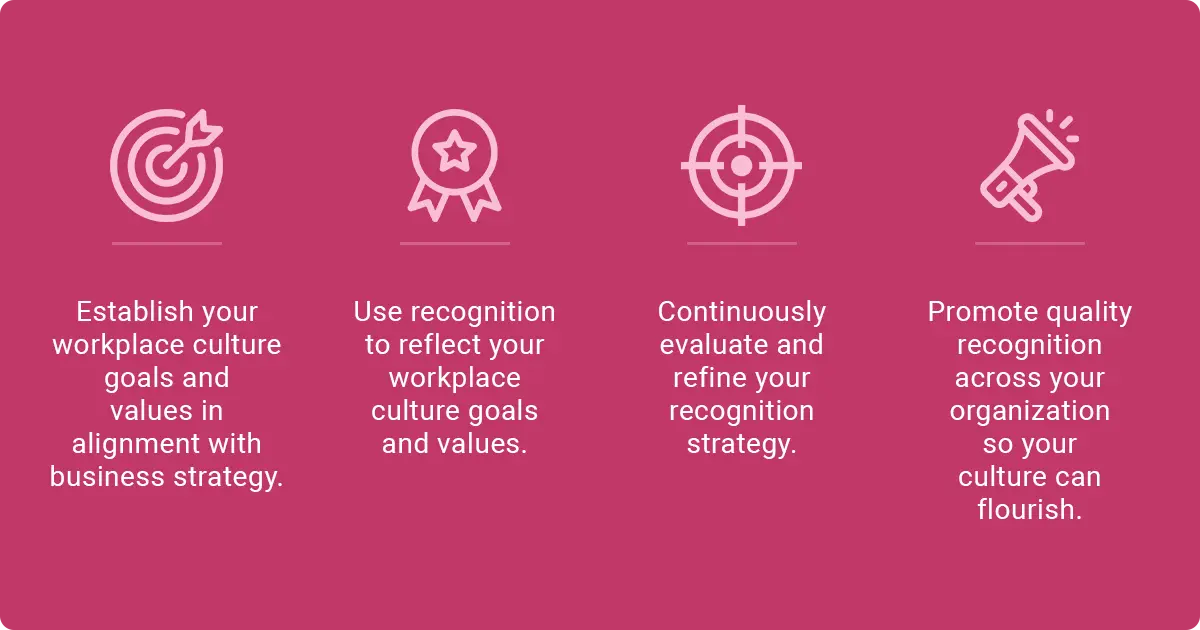How to Measure Culture Change in Your Organization
Table of contents
- 1. Identify the key performance indicators (KPIs) you’re aiming to improve in your company’s culture
- 2. Analyze results of pulse surveys, online company reviews, and employee net promoter (eNPS) scores
- 3. Utilize a dedicated culture measurement tool
- 4. Organize a focus group to help you gather feedback
- 5. Employ a dedicated culture manager as part of your human resources or employee experience team
- 6. Implement a strategic employee recognition program
- 7. Look out for inconsistencies between teams across the organization
- 8. Analyze your retention and turnover analytics more closely
- Conclusion

With so many companies focusing their time, efforts, and energy on changing their cultures for the better, the question of how to measure these changes is sure to arise. Leaders need to ensure that they’re investing resources and attention into the right areas in order to have the greatest impact on their employees’ day-to-day experiences.
Learning how to measure culture change in your organization can help you make deeper positive influences and manage your team more efficiently. Read on for tips to measure the success of your change initiatives on your organization’s culture.
1. Identify the key performance indicators (KPIs) you’re aiming to improve in your company’s culture
The effects of culture change efforts can be difficult to measure. However, identifying KPIs relevant to your goals can help your team gather quantitative information to track these changes.
Having specific, measurable goals to help monitor the success of your strategic objectives can help your organization see what is and isn’t working. This gives you the opportunity to continuously course-correctOpens in a new tab and alter your strategy to suit ever-shifting employee preferences and work trends.
2. Analyze results of pulse surveys, online company reviews, and employee net promoter (eNPS) scores
There are simple systems you can use to gather information about your company culture, many of which may already be in place. Conducting pulse surveys can help you measure the current level of employee engagement in your organization and offer actionable solutions to enhance the culture of a company where it might be lacking.
Online company reviews, such as those on Indeed or Glassdoor, can also help you gather insights into how your employees and former employees truly view working at your company. Tracking your monthly eNPS scores can also be deeply helpful when measuring cultural change over time.

3. Utilize a dedicated culture measurement tool
A culture measurement tool, such as the Organizational Culture Assessment Instrument (OCAI)Opens in a new tab, can be extremely helpful in tracking the success of your organization’s culture change initiatives.
This type of tool can help you measure the strengths of your company’s current culture, as well as the discrepancy between the present culture and a preferable future culture. Entering data into this tool can also help with measuring culture change over time.
Are you having trouble seeing insights through the data? Cut through the noise with Workhuman's AI AssistantOpens in a new tab.
Surfaces insights into people dynamics, cultural health, employee performance, and skills sourced straight from your employees. Use open-ended prompts to generate reports and highlights that can be quickly put into action.

Get the measure of your organization. Harness the combined powers of AI and recognition—Human Intelligence™—to stay agile through the changing world of work.
4. Organize a focus group to help you gather feedback
Creating a group of diverse, high-performing employees from across the organization can help you get a more well-rounded view of how your employees are actually feeling within the company. This can make measuring cultural change easier, as you’ll have direct, unfiltered access to your team’s thoughts and opinions and how they shift over time.
While your employees’ perception of your cultural change initiatives may be surprising, both in positive and negative ways, communicating openly with your focus group will help you see how they’re being received in the moment and over time.

5. Employ a dedicated culture manager as part of your human resources or employee experience team
Hiring an employee experience and culture manager can really help solidify your core values in your organization. This person can handle internal communication, solicit feedback on the current culture, lead the company’s idea submission board, and measure employee engagement over time.
This can also help with measuring company culture and uncovering points of improvement to work toward within the company.
Not only is there massive potential for meaningful cultural change when you have a dedicated leader working on your business goals, but having one person in charge of cultural data can also simplify your analytics. This individual can also be a powerful figure in determining how to measure culture change.
6. Implement a strategic employee recognition program
Among a myriad of other benefits, an employee recognition program, such as the one offered through WorkhumanⓇ, can be a great way to track company culture. Workhuman’s Social Recognition tool can help employees reward one another for exemplifying company values.
Workhuman is the #1 provider of employee recognition software. When you opt for recognition done right from Workhuman, you don't have to settle for second-rate recognition.
This can provide leaders with both qualitative and quantitative information about who is being recognized, how frequently, by whom, and for what. After implementation, you’ll quickly see how recognition programs can be powerful tools for cultural transformation.

7. Look out for inconsistencies between teams across the organization
When tracking changing culture in the workplace, it’s imperative to remember how vastly different the employee experience can be from one team to the next. Keep in mind that company culture can feel very different depending on where an employee sits within the organization.
Differences in workload, team synergy, and management styles can create huge discrepancies in your employees’ day-to-day experiences.
Conducting employee surveys to measure employee engagement can help you see what’s working in real-time. It may also help you uncover toxic leaders on your management team who need to be retrained, upskilled, or replaced.
While assessing how to measure culture change, keep in mind that you also may need to make some drastic changes to address those findings.
8. Analyze your retention and turnover analytics more closely
While most companies are carefully tracking these numbers, they’re not always being analyzed to measure culture change or organizational shifts. However, measuring how long it takes to fill open roles, the number of employee referrals coming in, and the identities of the employees leaving can provide you with a wealth of additional insights.
For example, a lower number of employee referrals may directly correlate to lower eNPS scores, which can indicate that employees are currently very unhappy with their work environment. Having a lot of people of color, queer people, neurodivergent people, or women leave the organization may point toward issues with your DEI initiatives.
High turnover concentrated in a certain team can point to issues with overworking, a lack of flexibility, or a toxic manager. Conducting exit interviews can be a great way to gather deeper insights into these issues and help you address these issues in the future.
Conclusion
Learning how to measure culture change more effectively can help your organization identify the best methods for your business to improve its employee experience. Accurate analytics can help you track culture change efforts and ensure that time, energy, money, and other resources are being utilized most effectively.
These efforts can help you improve your company culture at the moment, as well as set your team up for success in the future.
About the author
Anna Picagli
As an RYT500 yoga instructor and a Reiki Master Teacher, Anna is an advocate for holistic wellness, especially within the workplace. She’s extremely passionate about the brain-body connection and exploring how mental and physical wellness intersect.
Anna has experienced firsthand how chronic stress, overworking, poor management, and other organizational issues can lead to extreme burnout. Knowing the impact that a toxic work environment can have on a person’s body, psyche, and general sense of well-being, she now works to direct others away from facing the same fate.
As Workhuman’s Senior Content Specialist, Anna is a regular contributor to Workhuman iQ reports and aims to create resources that company leaders can reference to help improve their culture and empower their employees, creating healthier workplaces for everyone.
In her free time, she’s an avid solo traveler, a voracious reader, and a seasoned home chef. You can learn more about Anna’s work on LinkedIn or through the Yoga Alliance.